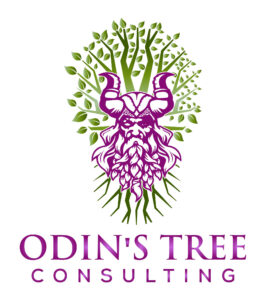Understanding the various generations that comprise the workforce is crucial for effective management and organizational success. Generational analysis, which involves examining the unique characteristics and preferences of different age groups, provides valuable insights into how to engage and motivate employees effectively. We will explore the importance of carrying out and comprehending generational analysis within the workplace, highlighting its positive impact on employee satisfaction, productivity, and overall organizational performance.
Enhancing Communication and Collaboration
One key advantage of generational analysis is its ability to promote better communication and collaboration among employees of different age groups. Each generation has distinct communication styles, preferences, and expectations, which can vary significantly. By understanding these differences, organizations can implement strategies to bridge the communication gap and foster a more inclusive and harmonious work environment.
For instance, traditionalists (born between 1928 and 1945) may value clear, concise, and formal communication, whereas millennials (born between 1981 and 1996) often prefer more informal and technology-driven communication channels. By recognizing and accommodating these generational preferences, organizations can establish effective communication strategies that resonate with employees across all age groups, ultimately leading to improved teamwork, innovation, and problem-solving.
Boosting Employee Engagement and Retention
Generational analysis also plays a vital role in enhancing employee engagement and retention. Different generations have varying expectations when it comes to work-life balance, career development, and recognition. By understanding these differences, organizations can tailor their employee engagement initiatives and retention strategies to meet the specific needs and wants of each generation.
For example, millennials tend to prioritize work that aligns with their values and offers opportunities for growth and advancement. In contrast, baby boomers (born between 1946 and 1964) often value job security and loyalty to the organization. By recognizing these generational differences, employers can design tailored training programs, mentorship initiatives, and flexible work arrangements that resonate with the diverse needs of their workforce. This customized approach to employee engagement fosters a sense of belonging, satisfaction, and loyalty, ultimately leading to increased productivity, lower turnover rates, and a stronger organizational culture.
Adapting to Technological Advancements
Another critical aspect of generational analysis is its role in adapting to technological advancements. Different generations possess varying levels of digital literacy and comfort with technology. For instance, millennials and Gen Z (born between 1997 and the present) are considered digital natives, while older generations may require more guidance and training to effectively utilize new technologies.
By understanding these generational differences, organizations can implement targeted training programs and provide ongoing support to ensure that employees of all ages have the necessary skills and knowledge to leverage technology in their roles. This approach not only enhances productivity and efficiency but also fosters a culture of continuous learning and innovation. So its stands to reason it is important to understand how our younger generation has become so lost.
In recent years, there has been a noticeable increase in the popularity of communist ideology and instances of antisemitism among the younger generation.
Communism, as an ideology, has a long and troubling history. Its core principles of state ownership, central planning, and the elimination of private property have proven to be detrimental not only to individual freedom and prosperity but also to the very essence of American values. This article aims to shed light on why communism is inherently evil and stands in stark contrast to the principles upon which the United States was founded.
- The Suppression of Individual Freedom
At the heart of communism lies the suppression of individual freedom. Communism seeks to replace personal choice and individual autonomy with a collective mindset, where the state controls all aspects of life. The idea of private property, a fundamental pillar of American society, is completely disregarded in a communist system. This denies individuals the right to own and control their possessions, stifling creativity, innovation, and personal motivation.
- The Erosion of Economic Prosperity
Communism’s centralized planning and state-controlled economy have consistently proven to be disastrous for economic growth and prosperity. By eliminating private enterprise and competition, communism hampers innovation and efficiency, leading to inefficiencies, shortages, and a lack of incentives for individuals to excel. History has shown that communist economies are plagued with widespread poverty, stagnation, and low living standards, depriving citizens of the opportunities for upward mobility that are central to the American Dream.
- The Assault on Human Rights
Communist regimes have an abysmal track record when it comes to protecting human rights. In the pursuit of a classless society, communism often resorts to authoritarianism, censorship, and political repression. Citizens are denied freedom of speech, assembly, and association, as dissenting voices are silenced and political opponents are persecuted. This egregious violation of basic human rights directly contradicts the principles enshrined in the United States Constitution and the Bill of Rights.
- The Destruction of Cultural Identity
Communism seeks to homogenize society by eradicating cultural and religious diversity. It disregards the importance of cultural heritage and the value of individual beliefs and practices. By imposing a rigid ideology and suppressing cultural expression, communism undermines the very fabric of American society, which thrives on the diversity and pluralism of its people.
- The Threat to National Security
Communism poses a significant threat to national security, both domestically and internationally. Its expansionist tendencies, historically demonstrated through the spread of communist ideology and the establishment of satellite states, undermine the sovereignty of nations and destabilize regions. The Cold War era witnessed the intense struggle between the United States and the Soviet Union, highlighting the inherent conflict between communism and American values.
Over the past few decades, there has been a growing concern regarding the liberal influence within the American education system. Critics argue that this influence has led to the indoctrination of our youth, steering them towards left-leaning ideologies such as socialism and even communism.
Historical Context:
It is crucial to examine the historical context surrounding the American education system. The liberal influence can be traced back to the progressive movement of the early 20th century, which aimed to transform society through education. Advocates of this movement viewed the school system as a means to promote social justice and equality. However, critics argue that this idealistic approach has since been twisted to serve a more politically motivated agenda.
Key Areas of Concern:
- Curriculum and Textbooks: One of the primary concerns is the content of textbooks and curriculum materials. Critics argue that these resources often present a biased and distorted view of American history, emphasizing the negative aspects while neglecting the virtues of our nation. This skewed perspective, they argue, is a deliberate attempt to undermine traditional values and promote a more socialist or even communist ideology.
- Faculty Bias: Another area of concern is the bias among educators themselves. Critics argue that a majority of teachers and professors lean towards left-leaning ideologies, leading to a liberal echo chamber in classrooms. This bias influences the way subjects are taught and can suppress conservative viewpoints, stifling intellectual diversity and critical thinking.
- Social Justice Programs: Many schools have implemented social justice initiatives, such as diversity training or multicultural programs. While proponents argue that these programs foster inclusivity and empathy, they prioritize identity politics over meritocracy, which can lead to an obsession with group differences rather than individual achievement. This undermines the principles of a fair and equal society.
Potential Consequences:
The consequences of this liberal hijacking of the education system are far-reaching. Critics argue that it hinders students’ ability to think critically and independently, as they are exposed to a one-sided narrative that discourages questioning or challenging prevailing ideologies. Furthermore, they argue that by promoting socialist or communist ideals, the system is inadvertently eroding the principles of capitalism and individual freedom that have made America prosperous.
In an era of multigenerational workforces, conducting and comprehending generational analysis is indispensable for organizations seeking to maximize employee satisfaction, productivity, and overall performance. By recognizing and embracing different generations’ unique characteristics, preferences, and expectations, employers can create an inclusive workplace culture that fosters effective communication, boosts employee engagement and retention, and adapts to technological advancements. Generational analysis can also help our organization understand the negative aspects of each generation, such as the anti-American communist ideology the younger generations might hold and how that ideology is not compatible with a functional workplace. Ultimately, a strategic and informed approach to generational analysis empowers organizations to leverage the diverse strengths and perspectives of their workforce, driving success and growth in today’s rapidly evolving business landscape.




